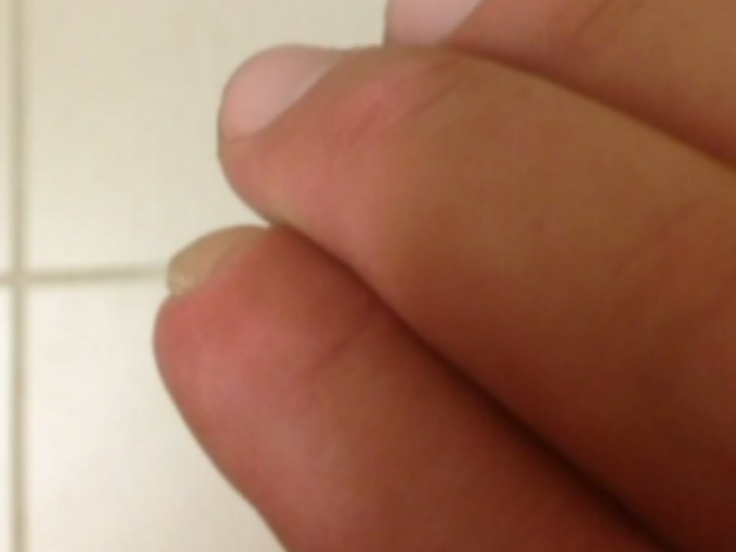Paul Halpern Regrows Finger After Horse Bite, Doctor Regenerates Jockey’s Finger Using Pig Tissue [PHOTO]

When a horse bit off the tip of his finger, Paul Halpern thought he would have to go under the knife for a full amputation.
But Dr. Eugenio Rodriguez from Delray Beach, Fla., who treated the 33-year-old, had a different plan. He made a mold of Halpern’s finger using a pig’s bladder tissue and attached it to his hand. Over time, the finger started to regenerate, NBC Miami reports.
"It's a certain powder, a dust that you sprinkle on your finger every other day. You wrap it up, and long story short it grew back – the majority of it,” Halpern said. "I'm quite happy."
The New Jersey-based jockey, who spends part of the year in Florida, said the horse bit him thinking his hand was a treat.
“After the treat it made a mistake. It’s a difficult horse and it had history using our training methods,” Halpern told CBS News. “One of the guys that worked with me reached his hand in the horse’s mouth, took the fingertip out, and I jumped in the car, grabbed the rest of my finger, wondering what we should do.”

The unorthodox treatment spanned two months, was easy and pain-free. "It stimulates your body to attract your stem cells, and then the stem cells start producing the tissue that is missing,” Rodriguez said.
Every other day Halpern would sprinkle powder comprised of pig’s bladder on his wound, mixed with a protective sheet and saline solution. Eventually the skin healed over the wound and his fingernail grew back.
“This is something, that there actually is no experience into this,” Rodriguez said. “I’m really grateful. I think it’s fantastic. I think in the future there’s going to be other uses for it, but it wasn’t a life-threatening injury. To me, it was something that was an accident.”
This isn’t the first time a human finger was regrown using pig’s bladder. Seven years ago, Lee Spievack cut off his finger while playing with a hobby shop airplane. Like Halpern, he was given pig’s bladder extract that he sprinkled on the wound until it grew back in a matter of weeks, CBS News reports.
"Somehow the matrix summons the cells and tell them what to do," Dr. Steven Badylak of the University of Pittsburgh's McGowan Institute of Regenerative Medicine said. "It helps instruct them in terms of where they need to go, how they need to differentiate - should I become a blood vessel, a nerve, a muscle cell or whatever."
© Copyright IBTimes 2024. All rights reserved.






















